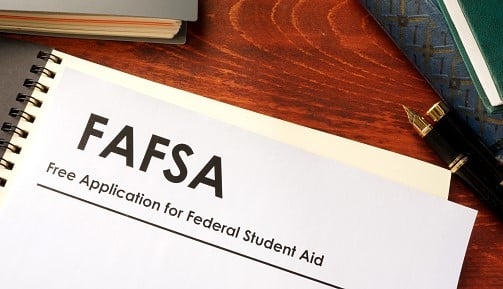You have /5 articles left.
Sign up for a free account or log in.

designer491/Getty Images
The high school Class of 2021 completed the Free Application for Federal Student Aid at a rate 4.8 percent lower than the year before, according to a report being released today by the National College Attainment Network.
Those figures are as of July 2.
An estimated 53.3 percent of the Class of 2021 completed a FAFSA by July 2. But about 102,000 fewer seniors completed a FAFSA this year -- and every indication is that the students who didn't complete this year, but would have in years past, are low income and/or minority. Thus, while competitive colleges are reporting that they received record applications and have good numbers of admitted students pledging to enroll, the numbers could indicate that less competitive colleges could face a second straight difficult year. Last year, the total FAFSA was down 81,000.
Students must complete the FAFSA to access federal grants and loans as well as many types of state and institutional financial aid.
"We warned that FAFSA completion would be bad because we knew it would be bad, and in the end: it’s bad," said Bill DeBaun, director of data and evaluation for NCAN.
In terms of year-over-year completions, the Class of 2021 has trailed the Class of 2020 all cycle. Things were the worst in November when the decline hit 16.8 percent. Since then, the Class of 2021 has made progress, but it has not closed the gap.
Some members of the high school senior class could still apply for aid, but their time to do so before the start of the academic year is shrinking.
The report breaks down which areas are doing better (and worse) than others in FAFSA completion.
- Among Title I-eligible public high schools, which enroll higher proportions of students from low-income backgrounds, FAFSA completions declined 6.5 percent compared to 3.7 percent for non-Title I-eligible public high schools.
- For schools with more than 50 percent Black and Latinx students, the decline was 8.1 percent compared to 2.2 percent in schools with less Black and Hispanic enrollment.
- Public high schools in cities (-6.6 percent) and small towns (-7 percent) declined the most, followed by schools in rural places (-5.5 percent) and suburban high schools (-4.2 percent).
In terms of good news, the survey ranked the states in terms of percentage of the high school senior class that filled out the FAFSA.
Louisiana (73.7 percent) reclaimed the top spot from Tennessee (71.6 percent) with Washington, D.C. (69.3 percent), Illinois (65.7 percent) and New Jersey (64.3 percent) rounding out the top five.
Illinois is the only newcomer to that top five this year.




